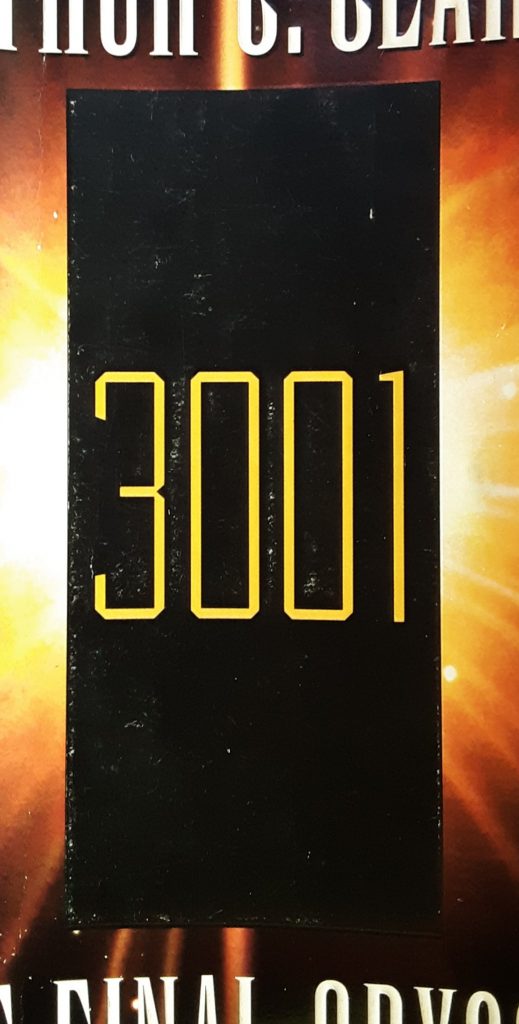By Arthur C. Clarke

$3.50 and badly bent as if it had spent a decade with half of its body on top of another paperback and half below yet another; I tried to bend it back into shape without success. I will endeavor to lay it under something heavy for another ten years, to flatten it out.
I had hoped that, given some mild disappointment that its prequel contained only a passing reference to the HAL 9000, I would finally be satiated with a full explanation of the politely maniacal computer of movie fame. I am weirdly obsessed with killer robots after all, but it was not to be. I was not happy to find that HAL had merged with Dave Bowman into a third, and benevolent entity, known as Halman.
The book unexpectedly resurrects the once dead crewman Frank Poole, from the first novel. Most of the book is spent discovering the future a thousand years after 2001 through his eyes. Poole’s resurrection after being found floating in the furthest reaches of our solar system, becomes mostly a plot device for Clarke to speculate about future developments in technology and human society. As interesting and prescient as some of these developments are, it serves mostly as an extended introduction to the story which ultimately gets crammed into the final few chapters, as human kind rushes to destroy the monolith.
As disappointed as I was, I still think Clarke is brilliant and I have no regrets about the $3.50 and the hours I spent reading 3001. As I am yet to read, 2001 itself, I reserve ultimate judgement until then. I only hope that my obsession with the movie version of HAL doesn’t ruin my experience. I will try and keep an open mind. Either way, I plan to watch the film again after I read it just in case.